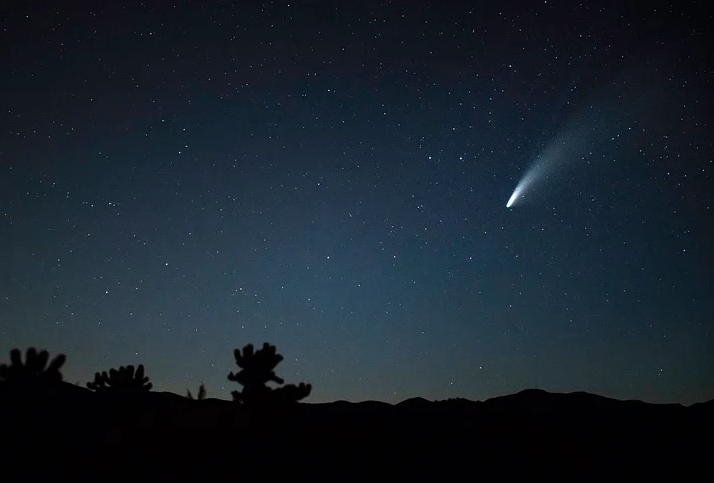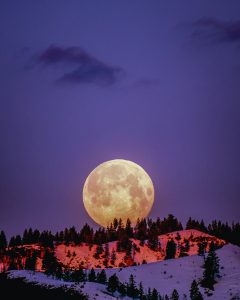Best Astronomical events in February 2024
The sky never ceases to provide a breathtaking show of celestial wonders, even if Earth recently began another revolution around our home star, the Sun. February 2024 won’t be any different it is full of conjunctions where you can easily find the planets in the sky alongside our natural satellite Moon. So gather your astronomy tools, note the dates, and let’s go on this astronomical journey together.

February 7- Conjunction of Moon and Venus
The crescent moon will cozy up to the dazzling Venus, creating a mesmerizing sight in the eastern sky before sunrise. Look for the slender moon nestled about 8 degrees south of Venus, their silvery glow contrasting beautifully against the twilight. Having a small pair of binoculars or a small telescope will reveal the phases of the planet Venus.
February 8- Conjunction of Moon and Mars
The moon continues its celestial rendezvous, partnering with the fiery Mars. This conjunction will be visible in the southeastern sky just before sunrise, with Mars appearing as a reddish point of light about 4 degrees north of the crescent moon.
February 11- Conjunction of Moon and Saturn
The moon pairs up with the ringed giant Saturn, offering a stunning spectacle in the western sky after the sunset in the evening twilight. Look for Saturn as a golden point of light about 2 degrees south of the crescent moon. Grab a small telescope as it will reveal the beautiful rings of the jewel of the night sky “Saturn”.
February 14- Comet C/2021 S3 at perihelion
The Comet C/2021 S3 (PANSTARRS) will make its closest approach to the Sun at a distance of 1.32 AU. On the day of perihelion, it will be visible through the aid of a telescope in the night sky. Use stargazing apps to detect the position of the comet C/2021 S3 in the night sky.

February 15- Conjunction of Moon and Jupiter
The moon pairs up with the majestic Jupiter creating a visual spectacle in the night sky. This conjunction will be visible in the western sky just after the sunset, with the gas giant Jupiter shining brightly about 3 degrees south of the first quarter moon. Get a small telescope and observe the brightest Jovian moon, “Ganymede, Callisto, Europa, and Io”.
February 16- Close approach of Moon and the Pleiades cluster (M45)
The Moon and the Pleiades cluster (also known as the seven sisters) will make a close approach in the constellation Taurus. The pair will become visible just after the sunset until they set in the western sky post-midnight.
.
February 24- Full Moon
The February full moon is known as the Snow Moon in many cultures. Its silvery glow will bathe the night sky in a soft radiance, offering a breathtaking spectacle for skywatchers around the world.
So, whether you’re a seasoned astronomer or a curious newcomer, February 2024 promises a celestial feast for the eyes. With a little planning and a dose of wonder, you can witness the mesmerizing dance of planets, the ethereal glow of a new moon, and perhaps even catch a glimpse of a comet’s journey. So, step outside, gaze up at the heavens, and let the February skies ignite your sense of awe and wonder. Beyond the listed events, February also holds other celestial treats in store:

Stargazing delights: Look for constellations like Orion, Taurus, and Gemini, which dominate the winter sky. Also using the sky maps or charts try to figure out the winter hexagon yourself.
Meteor showers: While the major meteor showers of the year occur in other months, February offers a chance to glimpse the Alpha Centaurids, a minor shower peaking on February 8th.

Planetary highlights: Saturn and Jupiter remain prominent in the evening sky, while Venus and Mars shine brightly in the southeastern sky just before dawn.
Remember, the key to enjoying the February skies is to be prepared. Dress warmly, find a dark observing location with minimal light pollution, and let your curiosity guide you. With a little patience and a sense of wonder, you’ll be rewarded with unforgettable celestial experiences that will leave you breathless and yearning for more. So, get ready to embrace the Astronomical events in February 2024, a month brimming with cosmic wonders and celestial alignments. Let the stars be your guide, and let the universe unfold its secrets before you.



